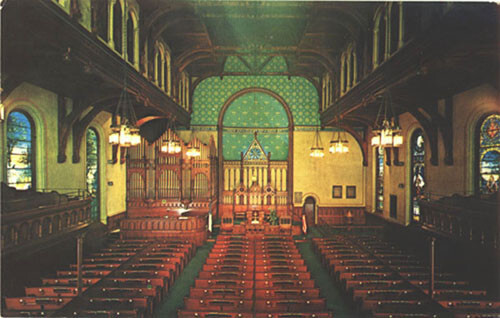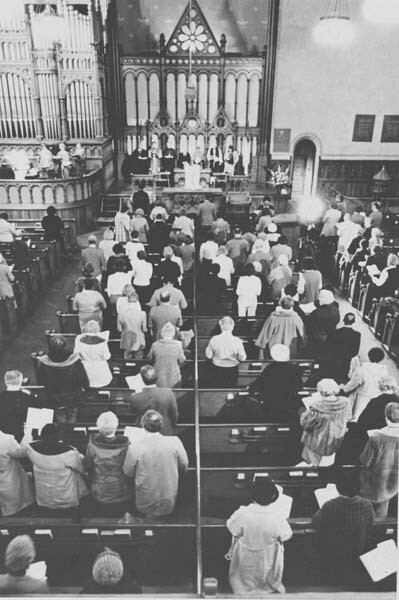Old Stone Church

First Presbyterian Church, commonly referred to as the Old Stone Church, is located on the northwest quadrant of Cleveland's Public Square at the corner of Ontario and Rockwell Streets. Possibly Cleveland's best-known religious building, Old Stone Church is a symbol of the city's birth and development. The church is the oldest standing structure on Public Square and is home to the second oldest religious organization in Cleveland. Origins of the church's congregation date back to meetings of the Union Sunday School held on the second-floor of Cleveland's first log cabin courthouse in 1819. The church was officially established the following year by approximately fifteen residents of the village. Out of these early prayer services, which were often interrupted by the gunshots of hunters in nearby thickets, First Presbyterian Church would grow into one of Cleveland's most prominent and influential religious institutions.
The buildings that housed First Presbyterian Church would also change over the years, reflecting the transformation of Cleveland from a village to an industrialized urban center. The first stone church, built in 1834, was replaced in 1853 by the present structure as a response to urban growth and the increased prosperity of the congregation. Fire and the corrosive effects of time initiated further modifications to Old Stone Church. Even the building's sandstone exterior began to take on the character of the industrial setting that it had been apart of for so long as the walls slowly turned a solemn and dignified black hue from years of exposure to environmental pollution.
To a large degree, Old Stone Church's popularity as a local landmark was due to its location on the Public Square. The building provided the backdrop for citizen meetings, picnics, protests, military processions, public celebrations, and leisurely walks in Cleveland's most famous and important public space. Even as the landscape surrounding Cleveland's Public Square became unrecognizable to each passing generation, the church retained its present location. With its steeples extending upward from the heart of Cleveland, the history and memories surrounding Old Stone Church have become intertwined with the city's identity.
Images









